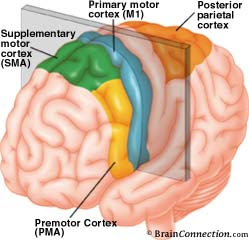All mammals have a cortex and it generally increases in size over evolution. Mice and rats have a smooth cortex, while that of cats is somewhat expanded and folded. Monkeys and apes show progressively bigger cortices as they get evolutionarily closer to humans. Dolphins and elephants also show highly expanded and folded cortices, so we are not the only species to arrive at this arrangement.












Expansion is coupled with an increase in the complexity of the cortex, as defined by the number of distinct cortical areas. This is mostly due to the emergence of additional association areas, where information from different inputs is integrated, and, in humans, an increase in distinct areas in the frontal and prefrontal cortex – the seat of the most sophisticated executive functions, including decision-making and long-term planning.
But when in evolution did the cortex actually evolve? Does it have some ancient precursor or did it arise as a new invention at some point? There has been considerable debate for decades over whether birds and reptiles have a counterpart of the cortex. They do have some regions that occupy the dorsal parts of the brain and perform somewhat similar functions, but their organization is so different from that of the cortex in mammals (which is arranged into discrete layers, while these regions in birds and reptiles are arranged into clusters of cells) that it has been difficult to establish their relationship.
Whether particular brain structures in different species are related to each other (i.e., whether they diverged from a single structure in a common ancestor) is often a subject of debate and controversy. It can be difficult if not impossible to determine based solely on location, anatomical organization or functional similarity. This is because it is relatively easy for these parameters to change over the course of evolution – they can be affected by changes to one or two genes, which means there is plenty of variation in these phenotypes within the population – the raw material for evolution by natural selection.
If the final phenotypic end-point of any particular region is quite variable, the opposite is true of the genetic pathways that specify the identity of the region at earlier stages of development. These involve master regulatory genes, whose expression is turned on or off in various parts of the embryo in response to earlier pathways that specify positional information (head from tail, back from belly, etc.). So, there are genes that differentiate nervous system tissue from the rest of the embryo, that differentiate forebrain, midbrain and hindbrain and that differentiate later subdivisions, including the cerebral cortex.
These genes act as “transcription factors”, controlling the expression of sets of proteins which define the mature characteristics of any particular region. While it is relatively easy for one of these effector proteins to change over evolution – affecting some specific characteristic of the region – it is much harder for the master regulatory genes to change. This is because they do not work alone – each area is defined by the expression of a combination of such genes, which are often turned on or off in a specific sequence. These genes interact in a complicated network of feedforward and feedback loops to orchestrate this complicated sequence. The networks in which they operate are so interlocked and involved in so many different parts of the embryo that mutations to any one gene tend to have very drastic consequences and will be rapidly selected against. These early regulatory systems are thus far less variable and tend to be highly conserved across evolution. So much so, in fact, that in many cases the function of one of these genes in one species can be carried out perfectly well by a copy of the gene from even a very distantly related species.
It is thus possible to tell whether a brain region in one species is homologous to one in another species (which may look quite different in its mature characteristics) by looking at how those regions were specified. If they derive from regions of the embryo which are specified by the same sets of regulatory genes then one can infer they both evolved from the same region in a common ancestor, no matter how different they may look now.